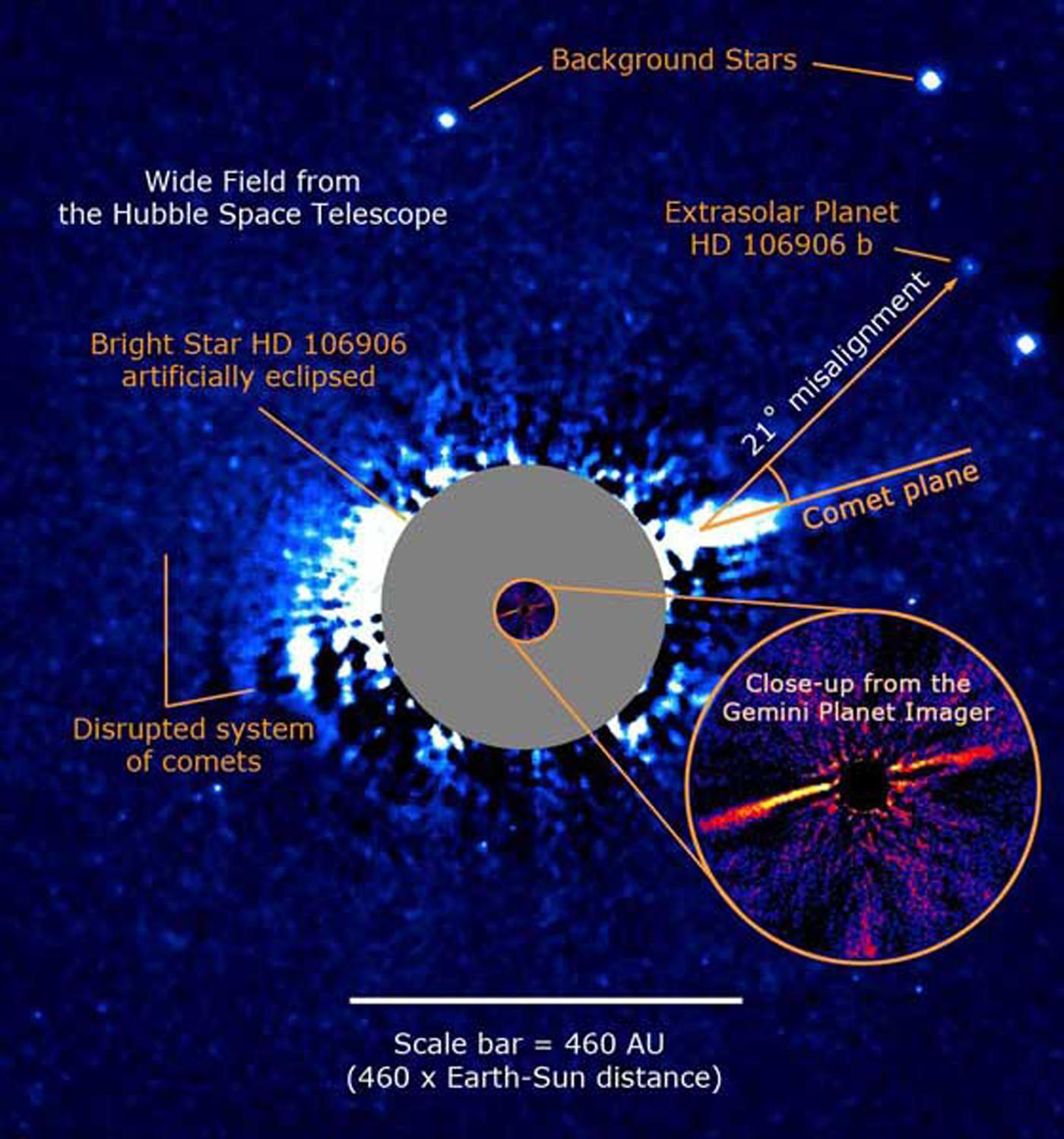A violent past to a solar system only 300 light-years away.

Young planets, like young children, don’t always play nicely.
Paul Kalas, a SETI Institute astronomer and adjunct professor at the University of California, Berkeley reported today on a system caught in the act of planetary misbehavior.
Using the Gemini Planet Imager (GPI) as well as the Hubble Space Telescope, Kalas and his colleagues examined a star known as HD 106906. This star, comparable in size and brightness to our Sun, is only 0.3 percent as old.
However, the remarkable thing about this stellar system is the discovery that a planet in its outer regions (16 times as far from the star as Pluto is from the Sun) may have been expelled from its birthplace. The planet is no longer in the star’s ecliptic plane, the flat region where orbiting worlds are generally found.
The ecliptic plane of HD 106906, defined by a swarm of comets, is tilted by more than 20 degrees to the planet. It seems most likely that the planet is being kicked out of this system, much as a child might toss a toy from a playpen. The cometary system of HD 106906 is also lopsided, a further testament to violence.
“Theorists have long thought that when planetary systems form, gravitational interactions among the newborns will eject some of these worlds into deep space,” notes Kalas. “The disturbed nature of this system seems to be an observational confirmation of this scenario.”
Measurements made in infrared light suggest that the planet may have dragged off some of the comets, and may still be encircled by a small swarm of dusty debris.
HD 106906 is located 300 light-years away, in Crux, a small constellation in the southern sky. The planet, discovered a year ago by a team at the University of Arizona, is almost a dozen times as massive as Jupiter.
The press release can be found at http://www.seti.org/seti-institute/press-release/exiled-exoplanet-possib...





